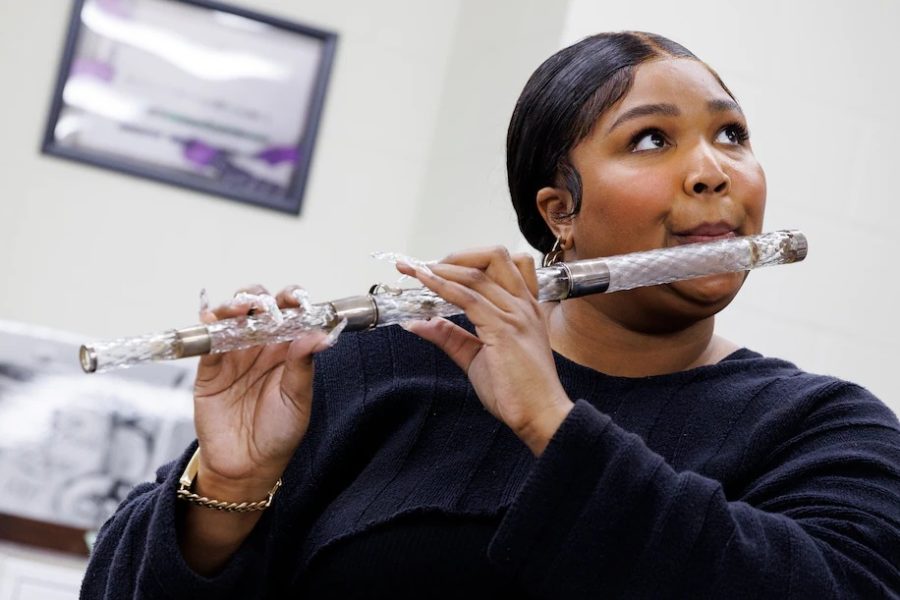A Case professor donated the James Madison flute Lizzo played
Courtesy of Shawn Miller / Library of Congress
Lizzo practices on a glass flute once owned by James Madison—which was donated to the Library of Congress by late Case professor Dr. Dayton Miller.
By now you’ve probably heard about this: Lizzo, the superstar musician whose song “About Damn Time” hit No. 1 on the Billboard Hot 100, played a concert in Washington, D.C., on Sept. 28 and surprised audiences by playing a crystal flute owned by the fourth president of the United States, James Madison. What you might not have known is that the flute has a direct link to Case Western Reserve University.
The flute was made in 1813 by a French flute craftsman in honor of Madison’s second inauguration and was among the items that first lady Dolley Madison saved when the British Army set fire to the White House during the War of 1812, along with George Washington’s famous portrait. Provided by the Library of Congress to Lizzo for the performance, the flute had previously sat mostly untouched. Lizzo contends that she was the only person who had ever played the flute before, making the event even more potentially momentous, beyond having a modern day pop artist play such a historic instrument.
“Bitch, I just twerked and played James Madison’s crystal flute from the 1800s,” she said on stage. “We just made history tonight!”
Naturally, there has been some controversy that has arisen from certain segments of the internet. Many right-wing culture warriors have contended that Lizzo had desecrated the instrument and degraded U.S. history by twerking while playing the flute. Supporters of Lizzo point out that she has played the flute since she was in grade school, and that much of this is just a reaction to an African American woman reclaiming a piece of American history, especially since Madison was a major slaveholder.
Regardless of the internet debate, the flute itself has a historical link to CWRU. It was donated in 1941 by Dr. Dayton Miller, a professor at the Case School of Applied Science—one of the universities that merged in 1967 to form CWRU. Miller was an avid collector of flutes, having obtained over 1,700 of them, including 18 glass flutes. The collection is one of the largest of its kind in the world and was donated to the Library of Congress upon Miller’s death. The flutes range in value and region of origin, with Miller’s collecting philosophy being one of breadth rather than specificity.
Miller taught at Case for over 40 years as a mathematics and physics professor. He headed the physics department between 1895 and 1936. He was a pioneer in the use of x-rays, having produced the first full x-ray of the human body using a self-made apparatus. In 1921 he met Albert Einstein to discuss his recreations of the famous Michelson-Morley experiments regarding the speed of light and how they impacted Einstein’s theory of relativity. Beyond his hobby of collecting flutes, he studied astronomy, composed music, built instruments and worked on the architectural acoustics of Severance Hall, the home of the Cleveland Orchestra. After his death he was buried in the nearby Lake View Cemetery.
CWRU’s long history of scientific and cultural research is something to be proud of and is personified by the eclectic interests of Dr. Miller. So next time someone mentions this event, make sure to mention how CWRU’s great faculty and our university’s legacy of scholarship is involved.
As Lizzo said after playing the flute, “History is freaking cool, you guys.”

Shreyas (he/him) is a fourth-year student majoring in biology and philosophy. If he isn't yammering to you about how great "Pet Sounds" is or making bad...


